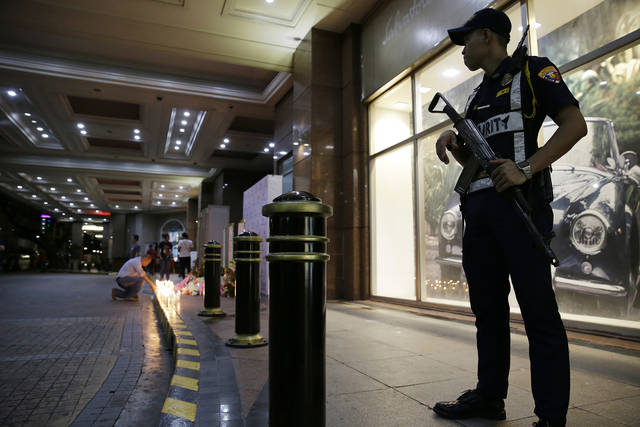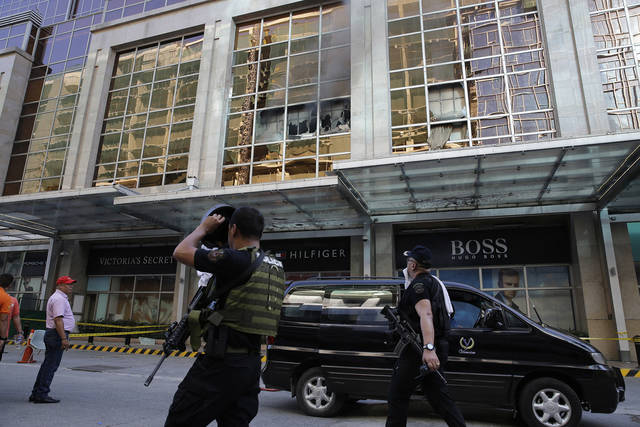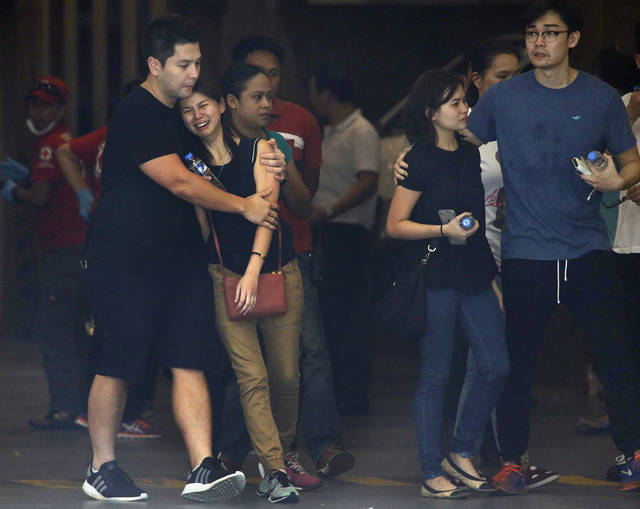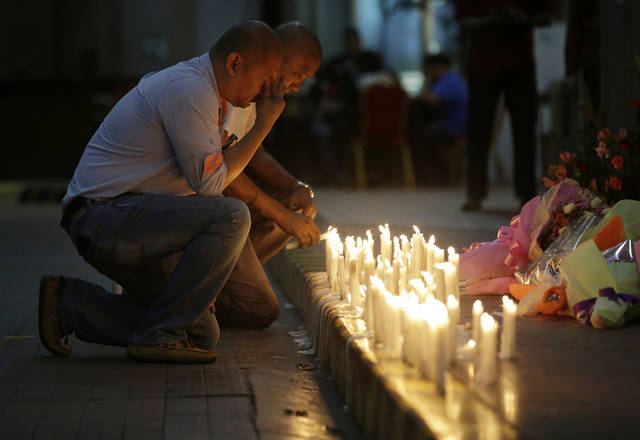Philippine police seek casino attacker’s identity
MANILA, Philippines — Philippine police say the attacker was a tall, English-speaking white man with a mustache. They say he carried an assault rifle and that he used gasoline to start a casino fire that caused clouds of smoke that left at least 36 people dead Friday morning in a sprawling entertainment complex in Manila.
But by Friday evening, police said they still didn’t know the man’s name, or why he launched his attack at the Resorts World Manila complex, only to flee to an adjoining hotel and kill himself.
The Islamic State group claimed responsibility for the attack, but Philippine police said they believed it had been a robbery gone wrong.
Police told reporters the man stole more than $2 million in gambling chips and avoided shooting people he encountered in the casino, pointing his gun upward when he fired some shots.
“He would have shot all the people gambling” if his goal was terrorism, national police chief Ronald dela Rosa said.
But hours later, the IS claimed responsibility in a statement, saying “Brother Abu al-Kheir al-Arkhabili was able to immerse among a gathering of Christian fighters in the Resorts World Manila in Manila where he carried out killing and hurting until he died as a martyr. About 100 Christians were killed or wounded.”
Military spokesman Brig. Gen. Restituto Padilla rejected the claim, saying the attack “does not have the slightest signature of terrorism whatsoever.”
“As in previous incidents, this group is prone to claim and admit every criminal incident and label it as its own, clearly indicative of its pure penchant for propaganda,” Padilla said.
Many in Manila feared after the attack began that it was linked to ongoing battles with Muslim militants aligned with the IS in the southern city of Marawi. The fighting has placed much of the country on edge and raised fears that the IS was gaining a foothold. The Philippines has faced Muslim insurgencies for decades, though much of the violence has occurred in the troubled south.
The attack occurred at a sprawling mall-like complex near the Manila airport that includes hotels, restaurants, stores and a multi-floor gambling area. Police said that during the attack the man stole more than $2 million worth of casino chips, though he apparently abandoned them in a toilet soon after.
“Either he lost in the casino and wanted to recoup his losses or he went totally nuts,” Metropolitan Manila police chief Oscar Albayalde said.
As the gunman left, he exchanged shots with a building guard who managed to shoot him in the leg after being wounded, police and casino officials said.
“Severe blood loss from the gunshot wound significantly slowed the assailant down and resulted in his holing up in a room where he took his own life,” said Stephen Reilly, Resort World’s chief operating officer.
Dela Rosa said security video showed the gunman earlier ignoring a guard who tried to question him at the complex’s entrance. He then barged into the crowded casino carrying the gasoline and assault rifle after overcoming efforts by guards to stop him. He stuffed a backpack with the gambling chips, fired his rifle at TV screens and set gambling tables on fire by pouring gasoline onto them from a 2-liter bottle he carried, dela Rosa said.
The gunman, whom dela Rosa described as “white, with a mustache,” about 6 feet tall and English speaking, fled the gambling area and barged into a room on the 5th floor of Maxims Hotel, which is part of the Resorts World complex. He lay down on the bed, covered himself with a blanket, doused himself with gasoline and then set himself on fire, dela Rosa said. He carried no identity documents, police said.
“I saw the gunman,” said a 23-year-old casino employee who declined to give her name. “He was a tall man, he was wearing a ski mask. He was carrying an armalite (rifle). I saw him fire his gun twice, I saw him burning gaming tables. But I did not see what he did after that because I fled.”
Police were examining a car that the gunman left in a complex parking garage, authorities said. Police Senior Superintendent Tomas Apolinario said the car’s owner was being questioned and had denied knowing the gunman.
The attack sent hundreds of people fleeing through the complex and into the night. A South Korean died of a possible heart attack suffered during the evacuation, the Foreign Ministry said. More than 70 people suffered mostly minor injuries in the stampede to escape.
Family members of employees spent hours waiting for news of their relatives, hoping through the night that they had survived.
Gil Yongco rushed to the complex when his daughter Hazel Anne, a casino employee, called early Friday. “She was asking for help because she said it was suffocating on the second floor area where she was,” a distraught Yongco said as he stood outside the Maxims hotel, adding that his daughter did not call again.
Hours later, when company officials announced the names of employees who perished in the attack, Hazel Anne was first on the list of 23 employees.
Ronald Romualdo, a Resorts World maintenance worker, said he and his colleagues heard gunshots and saw people smashing windows on the second and third floors to escape.
“We took out a ladder to save them. We were able to save many of them,” he said. “But one woman I was trying to save fell from the second floor. … I could not carry her.” He said the woman was not moving after she fell, but he didn’t know what happened to her.
As news of the attack spread, President Donald Trump offered America’s thoughts and prayers to the Philippines.
“It is really very sad as to what’s going on throughout the world with terror,” he said from the White House Rose Garden. Trump said he was “closely monitoring the situation.”
Philippine President Rodrigo Duterte, however, made no mention of the attack in a speech he gave to soldiers Friday in the country’s south.
The unrest in Marawi has sparked fears that militants might attack elsewhere to divert the focus of thousands of troops trying to quell the siege. But dela Rosa said, “We cannot attribute this to terrorism without concrete evidence.”
___
Associated Press journalists Teresa Cerojano, Joeal Calupitan and Bullit Marquez contributed to this report.






